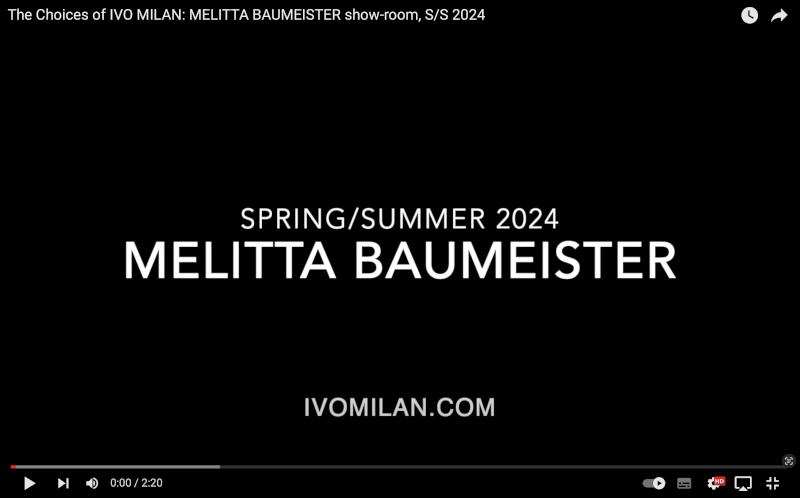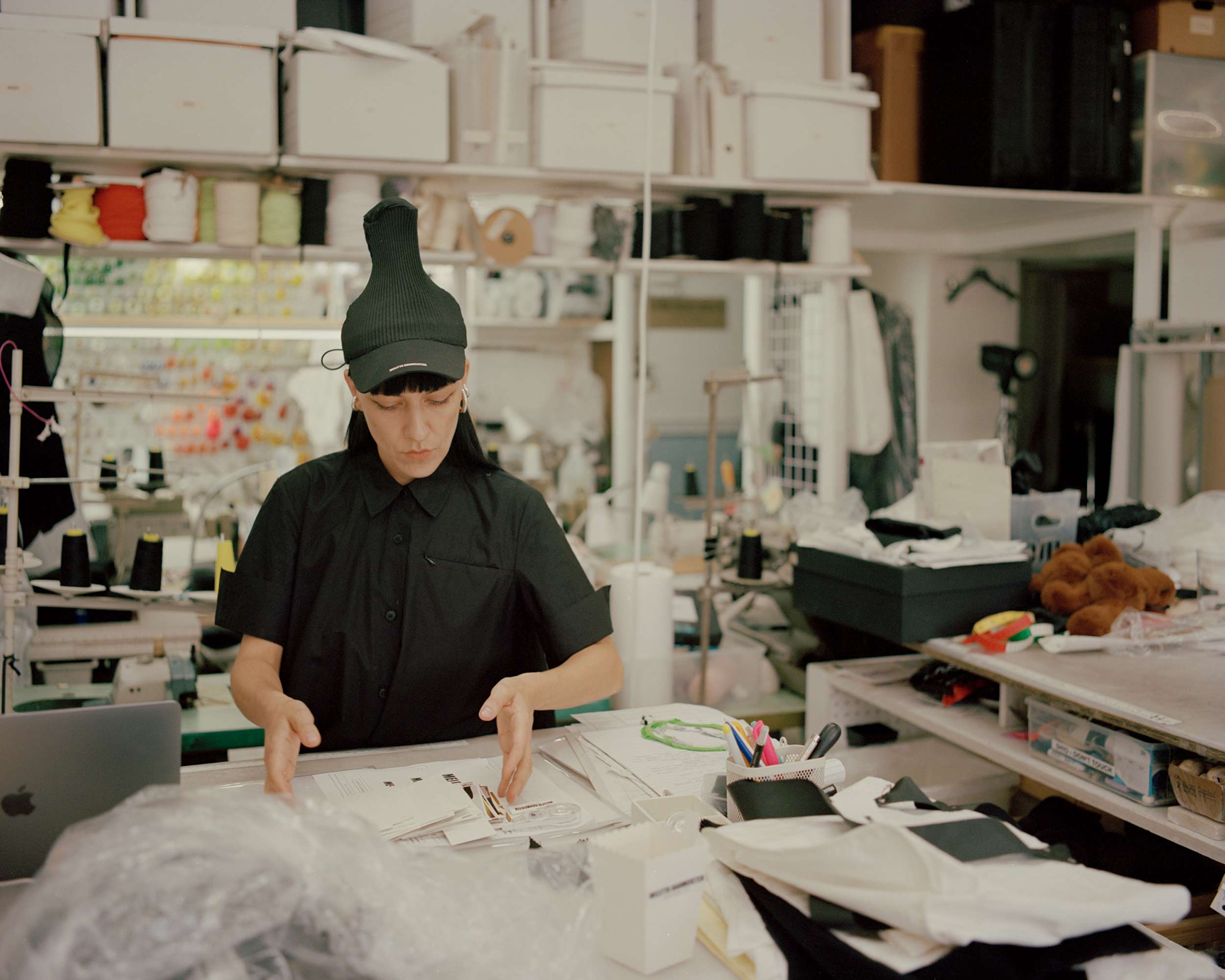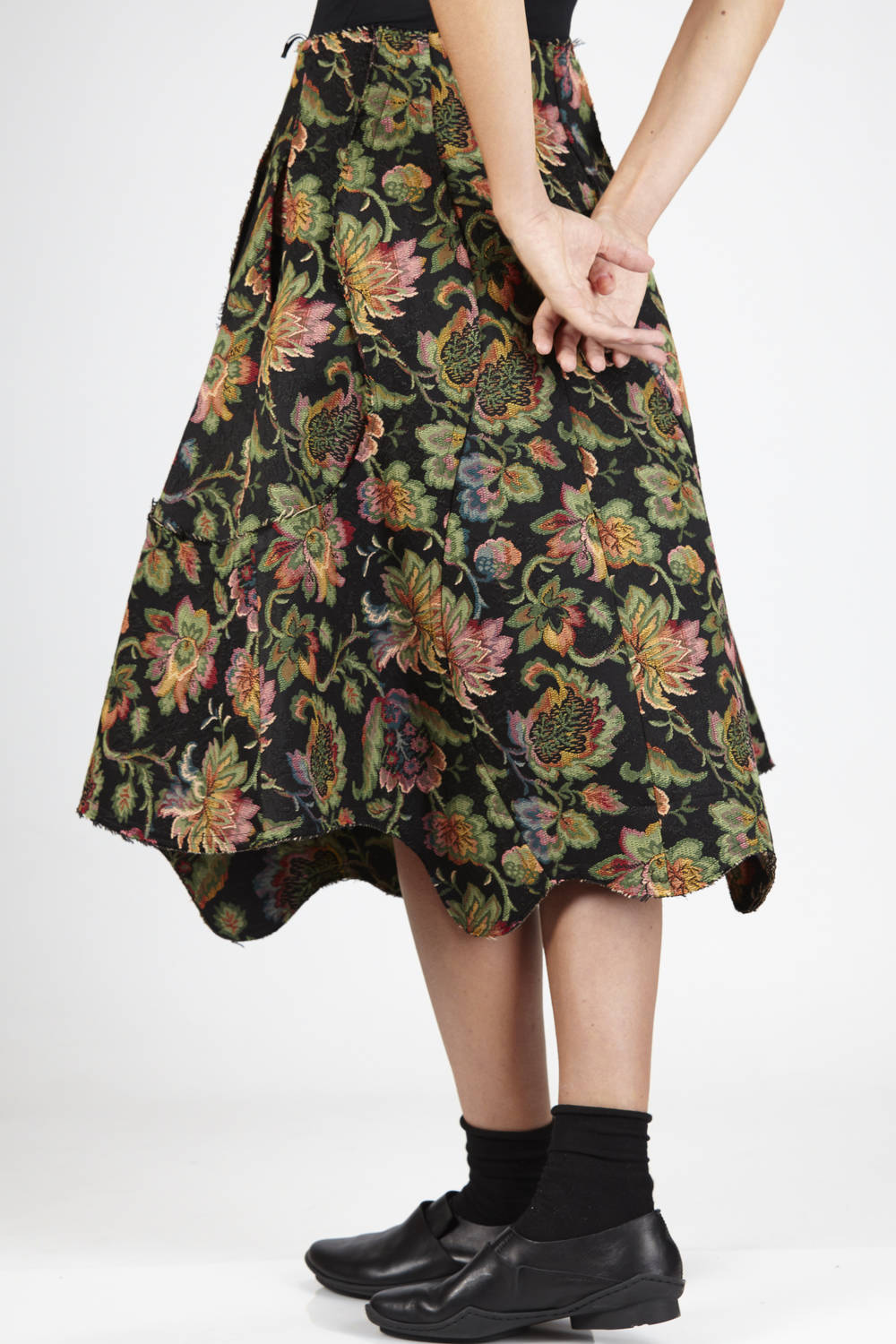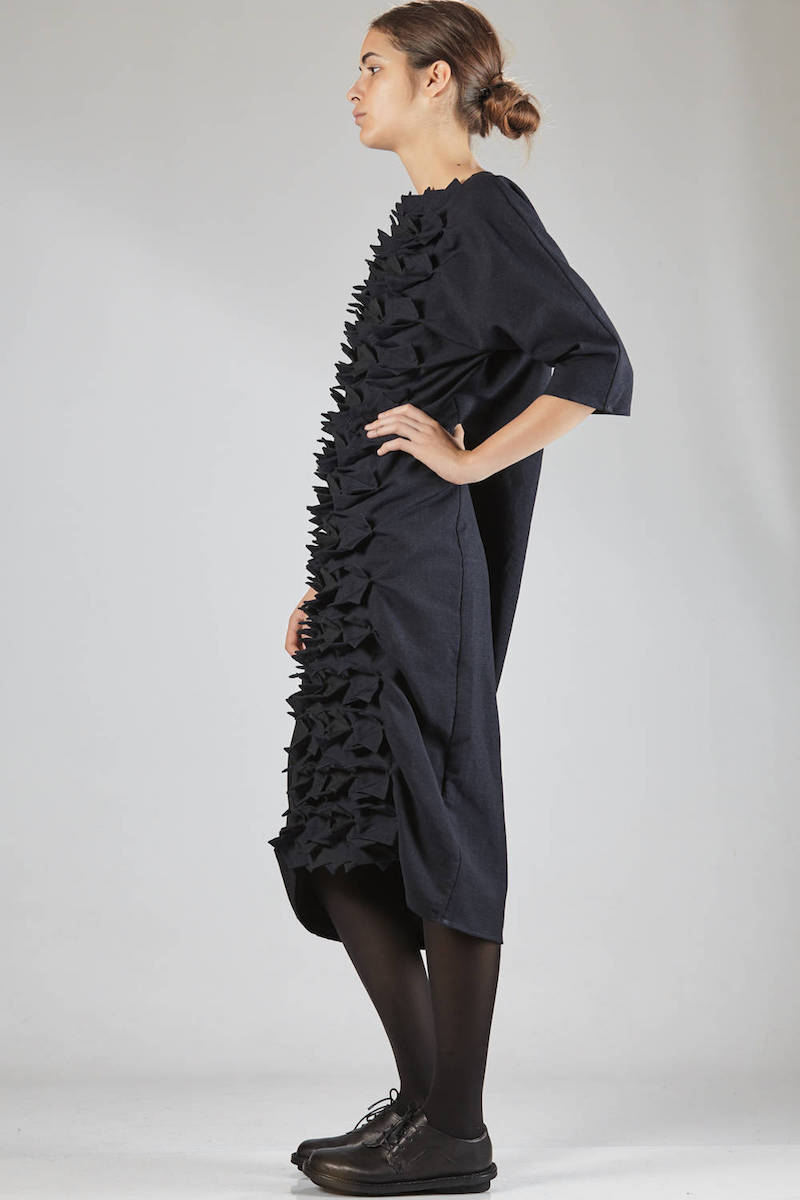Winner of the 2023 edition of the prestigious CFDA/Vogue Fashion Fund – award dedicated to the new design generations, established to sustain the most promising talents of the international scene in order that, quoting Anne Wintour, can be seen and heard – German origins and one master at the Parson University of New York, by now her chosen city, Melitta Baumeister is the designer of the homonymous brand founded in 2013 in the Big Apple, claimed for the already defined and identifiable language, constantly swinging between two worlds in dialogue: fashion and sculpture.
Where the inspiration takes form from items and fabrics of ordinary use, without formal and decorative excess, Melitta misleads the collocation, floors, by introducing materials that serve as real plastic structures that modify the space around the body of whom is wearing them. Dresses, shirts and tops, change their nature of necessary elements to a metropolitan everyday routine, lived following comfort needs typically juvenile and dynamic, of rides by bicycle and morning runs, in real communicative occasions: the sponge inserts itself in the rigid cotton or polyester giving three-dimensional original geometries and moving the usual axis of the architectural prospective.
Waves, irregualar bubbles and circles become spatial elements that decorate the silhouette connecting it to the ether, in a movement that accompanies the regal stride changing the perception, insinuating cheerfulness, surprise and influencing the posture itself, thanks to forms with disorienting visual impact, authentically new.
Melitte sustains short production chains, everything is produced in New York, and the textile lab are seen and followed incessantly in a productive cycle open to facing challenges, solving criticalities. Some items are treated as continuous, becoming real icons of the brand, following an ethic against the obsolescence typical of the sector.
The designer also reveals frequent contamination with artistic avantgardes and aesthetic symbols of her generation, traceable in the bold sketched snakes prints, in monochromatic contrast grafic signs or in trompe l’oeil hand dyed, decisively pop.
A creative and handcrafted adventure, the one of Melitta Baumeister, already widely embraced by art galleries and independent boutique, destined to developments to observe with curious and open attention.












































Recent Comments